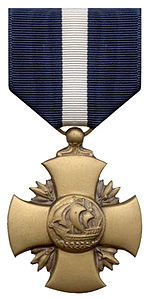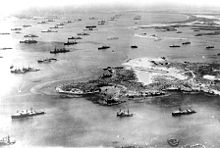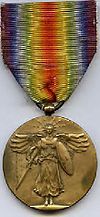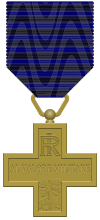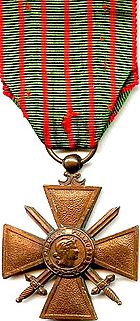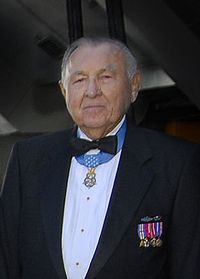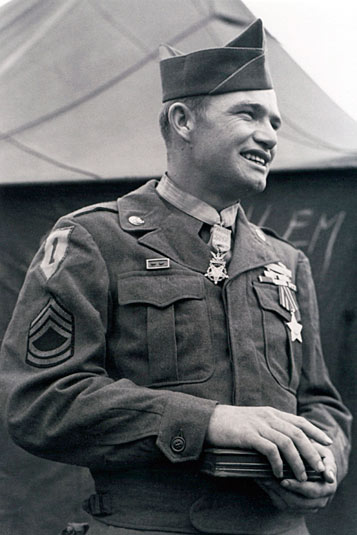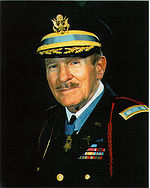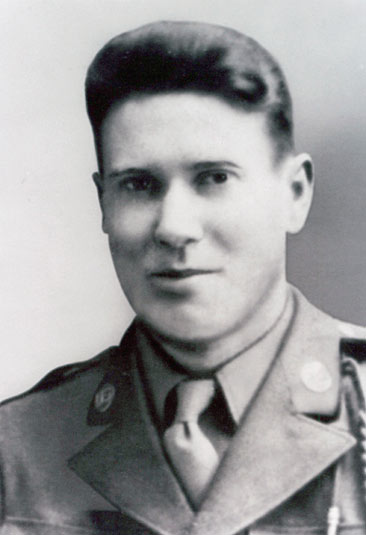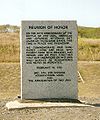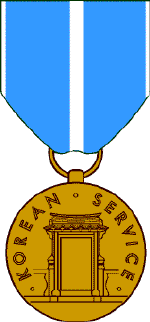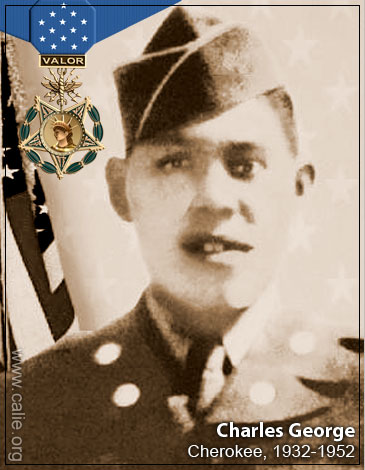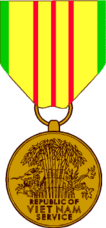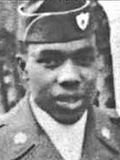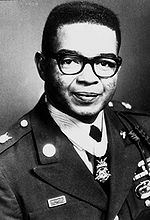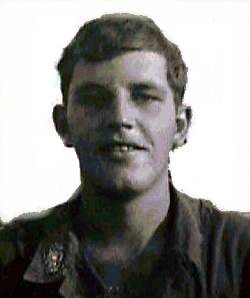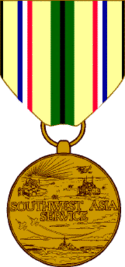Medal of Honor Recipients for North Carolina
|
|
|||||||||||||
|
Army * Navy-Marine
Corps-Coast Guard * Air Force
|
|||||||||||||
|
Resolved by the Senate and House of Representatives of the United States of America in Congress assembled, That the President of the United States be, and he is hereby, authorized to cause two thousand "medals of honor" to be prepared with suitable emblematic devices, and to direct that the same be presented, in the name of the Congress, to such non--commissioned officers and privates as shall most distinguish themselves by their gallantry in action, and other soldier-like qualities, during the present insurrection (Civil War). Complete listing of Medal of Honor Recipients at "Home of Heroes"
|
|||||||||||||
|
DOWN TO: Civil War -- Indian Wars -- Spanish-American War - - Philippine Insurrection -- Mexican War, Veracruz -- World War I - - World War II -- Korean War -- Vietnam War -- Gulf Wars - |
|||||||||||||
| Marine
Corps Brevet Award (obsolete) The Marine Corps Brevet Medal, also known as the Brevet Medal, was a military decoration of the United States Marine Corps; it was created in 1921 as a result of Marine Corps Order Number 26. The decoration was a one-time issuance and retroactively recognized living Marine Corps officers who had received a brevet rank. The similar practice of frocking continues in all five branches of the U.S. Armed Forces.
In 1921 Commandant John A. Lejeune requested that a Marine Corps Brevet Medal be authorized; after it was approved and created, the decoration was given to the last 21 living Marine Corps officers who received brevet promotions.
|
|||||||||||||
The Distinguished Service Cross (DSC) is the second highest military decoration that can be awarded to a member of the United States Army, for extreme gallantry and risk of life in actual combat with an armed enemy force. Actions that merit the Distinguished Service Cross must be of such a high degree to be above those required for all other U.S. combat decorations but not meeting the criteria for the Medal of Honor. The Distinguished Service Cross is equivalent to the Navy Cross (Navy, Marine Corps, and Coast Guard) and the Air Force Cross (Air Force). The Distinguished Service Cross was first awarded during World War I. In addition, a number of awards were made for actions before World War I. In many cases, these were to soldiers who had received a Certificate of Merit for gallantry which, at the time, was the only other honor besides the Medal of Honor the Army could award. Others were belated recognition of actions in the Philippines, on the Mexican Border and during the Boxer Rebellion. This decoration is distinct from the Distinguished Service Medal, which is awarded to persons in recognition of exceptionally meritorious service to the government of the United States in a duty of great responsibility.
|
|||||||||||||
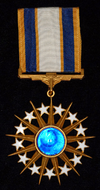 Distinguished
Service Medal Distinguished
Service MedalThe Distinguished Service Medal is the highest non-valorous military and civilian decoration of the United States of America military which is issued for exceptionally meritorious service to the government of the United States in either a senior government service position or as a senior officer of the United States armed forces or other Uniformed services. There is also the President's Award for Distinguished Federal Civilian Service which is the highest medal that can be awarded to a career government employee.
The Distinguished Service Medal was authorized by Presidential Order dated January 2, 1918, and confirmed by Congress on July 9, 1918. The Distinguished Service Medal is issued both as a military decoration and civilian award. The Army version of the Distinguished Service Medal is typically referred to simply as the "Distinguished Service Medal" while the other branches of service use the service name as a prefix. The following versions (awarded by the agency or department head) of the Distinguished Service Medal are currently issued by the United States government.
|
|||||||||||||
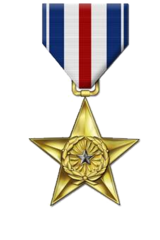 Silver
Star Silver
StarThe Silver Star is the third-highest military decoration that can be awarded to a member of any branch of the United States armed forces for valor in the face of the enemy. The Silver Star is awarded for gallantry in action against an enemy of the United States not justifying one of the two higher awards - the service crosses (Distinguished Service Cross, the Navy Cross, or the Air Force Cross), the second-highest military decoration, or the Medal of Honor, the highest decoration. The Silver Star may be awarded to any person who, while serving in any capacity with the armed forces, distinguishes himself or herself by extraordinary heroism involving one of the following actions: In action against an enemy of the United States
|
|||||||||||||
| Defense
Superior Service Medal (Recipient Web sites) The Defense Superior Service Medal is a senior United States military decoration of the Department of Defense, awarded to members of the United States armed forces who perform "superior meritorious service in a position of significant responsibility."
The first recipient of the Defense Superior Service Medal was Army Brigadier General John G. Jones, for service as the Military Assistant to the Deputy Secretary of Defense from February 1972 to July 1975.
|
|||||||||||||
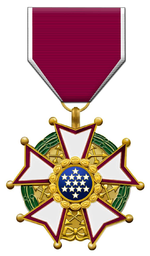 Legion
of Merit Legion
of MeritThe Legion of Merit was established by Act of Congress (Public Law 671, 77th Congress) approved July 20, 1942, and by Executive Order 9260 signed on October 29, 1942, by President Franklin D. Roosevelt. Award of the Legion of Merit is retroactive to September 8, 1939. The Legion of Merit is awarded to members of the Armed Forces of the United States without degree for exceptionally outstanding conduct in the performance of meritorious service to the United States. The performance must merit recognition by individuals in a key position which was performed in a clearly exceptional manner. The performance of duties normal to the grade branch, specialty or assignment and experience of an individual is not an adequate basis for this award. For service rendered in peacetime, the term "key individual" applies to a narrower range of positions than would be the case in time of war and requires evidence of significant achievement. In peacetime, service should be in the nature of a special requirement or of an extremely difficult duty performed in an unprecedented and clearly exceptional manner. However, justification of the award may accrue by virtue of exceptionally meritorious service in a succession of important positions.
|
|||||||||||||
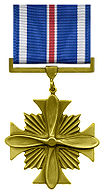 Distinguished
Flying Cross Distinguished
Flying CrossThe Distinguished Flying Cross is a medal awarded to any officer or enlisted member of the United States armed forces who distinguishes himself or herself in support of operations by "heroism or extraordinary achievement while participating in an aerial flight, subsequent to November 11, 1918." The decoration may also be given for an act performed prior to that date when the individual has been recommended for, but has not received the Medal of Honor, Distinguished Service Cross, Navy Cross, Air Force Cross or Distinguished Service Medal.
|
|||||||||||||
Soldier's Medal:
|
|||||||||||||
| Bronze
Star and Valor Device The Bronze Star Medal was established by Executive Order 9419, 4 February 1944 (superseded by Executive Order 11046, 24 August 1962, as amended by Executive Order 13286, 28 February 2003). The Bronze Star Medal may be awarded by the Secretary of a military department or the Secretary of Homeland Security with regard to the Coast Guard when not operating as a service in the Navy, or by such military commanders, or other appropriate officers as the Secretary concerned may designate, to any person who, while serving in any capacity in or with the Army, Navy, Marine Corps, Air Force, or Coast Guard of the United States, after December 6, 1941, distinguishes, or has distinguished, himself by heroic or meritorious achievement or service, not involving participation in aerial flight— (a) while engaged in an action against an enemy of the United States; (b) while engaged in military operations involving conflict with an opposing foreign force; or (c) while serving with friendly foreign forces engaged in an armed conflict against an opposing armed force in which the United States is not a belligerent party.
|
|||||||||||||
The Valor device (or “V device”) is authorized by all services and identifies the award as resulting from an act of combat heroism (as in the case of the Army and Air Force) or signifying that the medal was earned in combat (as in the case of the Navy), thus distinguishing it from meritorious achievement awards. However, an accumulation of minor acts of combat heroism does not justify an award of the Valor device. the bronze star is awarded for valor, achievement and service. Combat service deserving a bronze star, but not achieved in a particular valorous act, would warrant a meritorious (achievemenet) bronze star. The Valor device does not denote an additional award. Only one may be worn on any ribbon. |
|||||||||||||
 Purple
Heart Medal Purple
Heart MedalThe Purple Heart is a United States military decoration awarded in the name of the President to those who have been wounded or killed while serving on or after April 5, 1917 with the U.S. military. The National Purple Heart Hall of Honor is located in New Windsor, New York. With its forerunner, the Badge of Military Merit, which took the form of a heart made of purple cloth, the Purple Heart is the oldest award that is still given to members of the U.S. military, the only earlier award being the obsolete Fidelity Medallion. |
|||||||||||||
 FRANKS, WILLIAM J. FRANKS, WILLIAM J.
Rank and Organization: Seaman, U.S. Navy. Born: 1830, Pittsboro, Chatham Co, North Carolina Died: 18 April 1880 Maple Springs, Independence Co., Arkansas Buried: Maple Springs Cemetery, Arkansas Entered Service At: Duvalls Bluff, Prairie Co., Arkansas. General Order No. 32, 16 April 1864. Citation: Served on board the U.S.S. Marmora
off Yazoo City, Mississippi, 5 March 1864.
See also: Home of Heroes
|
|||||||||||||
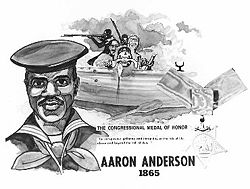 SANDERSON, AARON SANDERSON, AARON
aka ANDERSON, AARON Rank and organization: Landsman, U.S. Navy. Entered service at: Philadelphia, Philadelphia Co., Pennsylvania. Born: 1811, Plymouth, Washington Co., North Carolina. Died: 9 January 1886 Philadelphia, PA Buried: Lebanon Cemetery, Philadelphia, PA General Order No. 59, 22 June 1865. Citation: Served on board the U.S.S. Wyandank during a boat expedition up Mattox Creek, 17 March 1865. Participating with a boat crew in the clearing of Mattox Creek, L/man Anderson carried out his duties courageously in the face of a devastating fire which cut away half the oars, pierced the launch in many places and cut the barrel off a musket being fired at the enemy.
*See Aaron Sanderson (aka Anderson) at wikipedia.org African American
|
|||||||||||||
 SHEA, JOSEPH H. SHEA, JOSEPH H.
Rank and Organization: Private, Company K, 92d New York Infantry. Place and Date: At Chapins Farm, Va., 29 September 1864. Birth: Baltimore, Md. Date Of Issue: March 1866. Citation: Gallantry in bringing wounded from the field under heavy fire. Accredited to: New Bern, Craven Co., North Carolina
|
|||||||||||||
|
Rank and Organization: Private, Company B, 8th Missouri Infantry. Place and Date: At Vicksburg, Miss., 22 May 1863.
Entered Service At: St. Louis, Mo. Born: 24 October 1841, Cedar Falls, Randolph Co., North Carolina Buried: Calvary Cemetery, Los Angeles, CA Date Of Issue: 3 August 1894. Citation: Gallantry in the charge of the "volunteer storming party." He carried his regiment's flag and tried to borrow a gun to defend it. |
|||||||||||||
|
Rank and Organization: Private, Company A, 7th U.S. Infantry. Place and Date: At Big Hole, Beaverhead Co., Montana 9 August 1877. Entered Service At: Indianapolis, Marion Co., Indiana. Birth: December 1851, Davidson County, North Carolina Died: 17 April 1906 Date of Issue: 8 May 1878. Citation: After having been severely wounded in right shoulder, continued to do duty in a most courageous manner. |
|||||||||||||
|
Rank and Organization: Farrier, Company L, 2d U.S. Cavalry. Place and Date: At Little Muddy Creek, Montana., 7 May 1877- at Camas Meadows, Nez Perces Co., Idaho, 20 August 1877. Entered Service At: Louisville, Jefferson Co., Kentucky. Born: 1842, Davidson Co., North Carolina Died: December 23, 1911, Efland, Orange Co., NC Buried: Efland Methodist Church Cemetery, Orange Co., North Carolina Date of Issue: 28 February 1878. Farrier, Company L, 2d U.S. Cavalry. Citation: Gallantry in the attack against hostile Sioux Indians on May 7, 1877 at Muddy Creek, Montana, and in the engagement with Nez Perces Indians at Camas Meadows, Idaho, on 20 August 1877 in which he sustained a painful knee wound. |
|||||||||||||
|
Rank and Organization: Sergeant, Company K, 10th U.S. Cavalry. Place and Date: Arizona, 7 March 1890. Entered Service At: New York, New York Co., New York. Born: 14 February 1861, Elizabethtown, Bladen Co, North Carolina Died: 8 March 1941, Philadelphia, PA Buried: Arlington National Cemetery, Arlington, VA Date of Issue: 15 May 1890. Sergeant, Company K, 10th U.S. Cavalry. Place and Date: Arizona, 7 March 1890. Citation: Distinguished himself for coolness, bravery and marksmanship while his troop was in pursuit of hostile Apache Indians. African American |
|||||||||||||
|
Rank and Organization: Seaman, U.S. Navy. Born: 22 July 1876, Reelsboro, Pamlico Co., North Carolina Died: 6 December 1948 Buried: Evergreen Memorial Park, Portsmouth, VA* Entered Service At: Norfolk, St. Lawrence Co., Virginia General Order No. 521, 7 July 1899.
USS Nashville (PG-7) at the Norfolk Navy Yard, Virginia, 8 January 1898 Citation: On board the U.S.S. Nashville during the cutting of the cable leading from Cienfuegos, Cuba, 11 May 1898. Facing the heavy fire of the enemy, Barrow set an example of extraordinary bravery and coolness throughout this action. See also: David Duffy Barrow on Home of Heroes *Listed as: BARRON, David Duffy: b. 26 Jul 1876, d. 6 Dec 1948, bur. 9 Dec 1948
|
|||||||||||||
|
Rank and organization: Private, U.S. Marine Corps. Born: 17 March 1874, Gates Co., North Carolina Died: 30 December 1946 Buried: Roxobel-Kelford Cemetery, Roxobel, Bertie Co., NC Accredited to: North Carolina. General Order No. 521, 7 July 1899.
Depiction of American boats cutting the cable at Cienfuegos Citation: On board the U.S.S. Nashville during the operation of cutting the cable leading from Cienfuegos, Cuba, 11 May 1898. Facing the heavy fire of the enemy, Parker displayed extraordinary bravery and coolness throughout this action. |
|||||||||||||
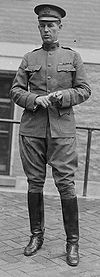 JOHNSTON, GORDON
JOHNSTON, GORDON
Rank and Organization: First Lieutenant, U.S. Signal Corps. Place and Date: At Mount Bud Dajo, Jolo, Philippine Islands, 7 March 1906. Entered Service At: Birmingham, Jefferson Co., Alabama Born: 23 May 1874, Charlotte, Mecklenburg Co., North Carolina Died: 8 March 1934 Buried: Arlington National Cemetery, Arlington, VA Date of Issue: 7 November 1910. General Order No. 207. Other Military Awards:
Citation: Voluntarily took part in and was dangerously wounded during an assault on the enemy's works. |
|||||||||||||
|
Rank and Organization: Sergeant, Company 1, 22d U.S. Infantry. Place and Date: Near San Isidro, Luzon, Philippine Islands, 19 October 1899. Entered Service At: St. Louis, St. Louis Co., Missouri. Birth: 6 August 1872, Pensacola, Yancey Co., North Carolina Buried: Grandfield Memorial Cemetery, Grandfield, Tillman Co., Oklahoma Date of Issue: 18 April 1902. Citation: Most distinguished gallantry in action. Captured a bridge with the detachment he commanded and held it against a superior force of the enemy, thereby enabling an army to come up and cross. |
|||||||||||||
|
Rank and organization: Captain, U.S. Navy. Born: 16 July 1860, Wilmington, New Hanover Co., North Carolina Died: 23 September 1933 Buried: Arlington National Cemetery, Arlington, VA Accredited to: North Carolina. General Order No. 177, 4 December 1915. Other Military award: Distinguished Service Medal.
Citation: For extraordinary heroism in battle, engagement of Vera Cruz, 22 April 1914, in command of the 2d Seaman Regiment. Marching his regiment across the open space in front of the Naval Academy and other buildings, Capt. Anderson unexpectedly met a heavy fire from riflemen, machineguns and l_pounders, which caused part of his command to break and fall back, many casualties occurring amongst them at the time. His indifference to the heavy fire, to which he himself was exposed at the head of his regiment, showed him to be fearless and courageous in battle. |
|||||||||||||
|
Rank and organization: Lieutenant Commander, U.S. Navy. Born: 7 June 1874, Lincolnton, Lincoln Co, North Carolina Died: 4 July 1959 Buried: Arlington National Cemetery, Arlington, VA Accredited to: North Carolina. General Order No. 177, 4 December 1915. Other Military award: Navy Cross.
Citation: For distinguished conduct in battle, engagement of Vera Cruz, 22 April 1914; was regimental adjutant, and eminent and conspicuous in his conduct. He exhibited courage and skill in leading his men through the action of the 22d and in the final occupation of the city. |
|||||||||||||
 STATON, ADOLPHUS
STATON, ADOLPHUS
Rank and organization: Lieutenant, U.S. Navy. Place and date: Vera Cruz, Mexico, 22 April 1914. Entered service at: North Carolina. Born: 28 August 1879, Tarboro, Edgecombe Co., North Carolina Died: 4 June 1964 Buried: Arlington National Cemetery, Arlington, VA Other Military Awards: *World War I - Navy Cross
Citation: For distinguished conduct in battle, engagement of VeraCruz, 22 April 1914; was eminent and conspicuous in command of his battalion. He exhibited courage and skill in leading his men through the action of the 22d and in the final occupation of the city.
*Note: Adolphus Staton was awarded the Medal of Honor during the Mexican Campaign and the Navy Cross in World War I. |
|||||||||||||
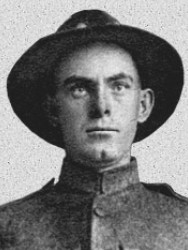 BLACKWELL, ROBERT LESTER BLACKWELL, ROBERT LESTER
Rank and Organization: Private, U.S. Army, Company K, 119th Infantry, 30th Division. Place and Date: Near St. Souplet, France, 11 October 1918. Entered Service At: Hurdle Mills, Person Co., North Carolina Birth: 4 October 1895, Person Co., North Carolina Died: 11 October 1918 Buried: Somme American Cemetery and Memorial Somme Picardie, France G. O. No.: 13, W.D., 1919. Other Military awards:
Citation: When his platoon was almost surrounded by the enemy and his platoon commander asked for volunteers to carry a message calling for reinforcements, Pvt. Blackwell volunteered for this mission, well knowing the extreme danger connected with it. In attempting to get through the heavy shell and machinegun fire this gallant soldier was killed.
|
|||||||||||||
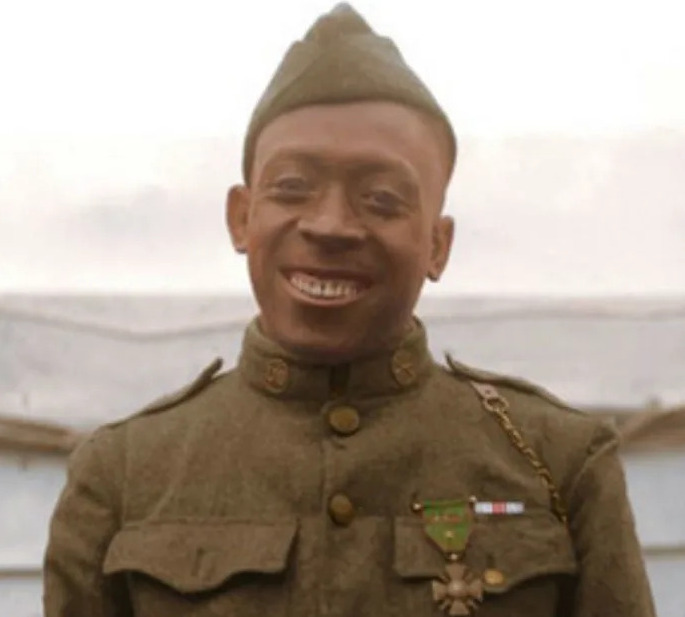 JOHNSON,
HENRY JOHNSON,
HENRY Rank and Organization: Private First Class, U.S. Army, 369th Infantry Regiment, 93d Division, American Expeditionary Forces, a.k.a. Harlem Hellfighters. Enlistment record says attained rank of Sergeant on May 1, 1918. Place and Date: Front lines of the Western Front in France, May 15, 1918. Entered Service: 5 June 1917, Albany, NY Birth: 15 July 1892, Winston-Salem, Forsyth
Co., North Carolina Buried: 5 July 1929, Arlington National Cemetery, Arlington, Virginia Other Military Awards:
Citation: The President of the United States of America, in the name of Congress, takes pride in presenting the Medal of Honor (Posthumously in 2015) to Private Henry Johnson (ASN: 1316046), United States Army. Private Henry Johnson distinguished himself by extraordinary acts of heroism at the risk of his life above and beyond the call of duty while serving as a member of Company C, 369th Infantry Regiment, 93rd Infantry Division, American Expeditionary Forces, on May 15, 1918, during combat operations against the enemy on the front lines of the Western Front in France. In the early morning hours, Private Johnson and another soldier were on sentry duty at a forward outpost when they received a surprise attack from the German raiding party consisting of at least 12 soldiers. While under intense enemy fire and despite receiving significant wounds, Private Johnson mounted a brave retaliation, resulting in several enemy casualties. When his fellow soldier was badly wounded and being carried away by the enemy, Private Johnson exposed himself to great danger by advancing from his position to engage the two enemy captors in hand-to-hand combat. Wielding only a knife and gravely wounded himself, Private Johnson continued fighting, defeating the two captors and rescuing the wounded soldier. Displaying great courage, he continued to hold back the larger enemy force until the defeated enemy retreated, leaving behind a large cache of weapons and equipment and providing valuable intelligence. Without Private Johnson's quick actions and continued fighting, even in the face of almost certain death, the enemy might have succeeded in capturing prisoners in the outpost and abandoning valuable intelligence. Private Johnson's extraordinary heroism and selflessness above and beyond the call of duty are in keeping with the highest traditions of the military service and reflect great credit upon himself, Company C, 369th Infantry Regiment, 93rd Infantry Division, and the United States Army.
|
|||||||||||||
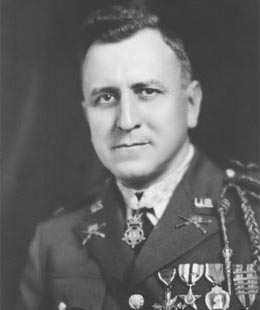 PARKER, SAMUEL IREDELL PARKER, SAMUEL IREDELL
Rank and Organization: Second Lieutenant, *U.S. Army, Company K, 28th Infantry, 1st Division. Place and Date: Near Soissons, France, 18-19 July 1918. *On 29 June 1917, the men of Company K became the first American combat unit to set foot on European soil at St. Nazair, France. Entered Service At: Monroe, Union Co, North Carolina Birth: 17 October 1891, Monroe, Union Co, North Carolina Died: 1 December 1975 Buried: Oakwood Cemetery, Concord, Cabarrus Co., NC G. O. No.: 1, W.D. 1937. Citation: For conspicuous gallantry and intrepidity above and beyond the call of duty. During the attack the 2d and 3d Battalions of the 28th Infantry were merged, and after several hours of severe fighting, successfully established a frontline position. In so doing, a gap was left between the right flank of the French 153d 93d Division, American Expeditionary Forces Division on their left and the left flank of the 28th Infantry, exposing the left flank to a terrific enfilade fire from several enemy machineguns located in a rock quarry on high ground. 2d Lt. Parker, observing this serious situation, ordered his depleted platoon to follow him in an attack upon the strong point. Meeting a disorganized group of French Colonials wandering leaderlessly about, he persuaded them to join his platoon. This consolidated group followed 2d Lt. Parker through direct enemy rifle and machinegun fire to the crest of the hill, and rushing forward, took the quarry by storm, capturing 6 machineguns and about 40 prisoners. The next day when the assault was continued, 2d Lt. Parker in command of the merged 2d and 3d Battalions was in support of the 1st Battalion. Although painfully wounded in the foot, he refused to be evacuated and continued to lead his command until the objective was reached. Seeing that the assault battalion was subjected to heavy enfilade fire due to a gap between it and the French on its left, 2d Lt. Parker led his battalion through this heavy fire up on the line to the left of the 1st Battalion and thereby closed the gap, remaining in command of his battalion until the newly established lines of the 28th Infantry were thoroughly consolidated. In supervising the consolidation of the new position, 2d Lt. Parker was compelled to crawl about on his hands and knees on account of his painful wound. His conspicuous gallantry and spirit of self-sacrifice were a source of great inspiration to the members of the entire command.
|
|||||||||||||
|
Rank and organization: Sergeant, U.S. Army, Company D, 503d Parachute Infantry. Place and date: At Noemfoor Island, Dutch New Guinea, 23 July 1944. Entered service at: LaGrange, Lenoir Co., North Carolina Born: 6 February 1922, Snow Hill, Greene Co., North Carolina Died: 23 July 1944 Buried:
Westview Cemetery, Kinston, Lenoir Co., NC
General Order No. 20, 29 March 1945. Citation: For conspicuous gallantry and intrepidity at the risk of his life above and beyond the call of duty at Noemfoor Island, Dutch New Guinea, 23 July 1944. While moving to the relief of a platoon isolated by the enemy, his company encountered a strong enemy position supported by machinegun, rifle, and mortar fire. Sgt. Eubanks was ordered to make an attack with 1 squad to neutralize the enemy by fire in order to assist the advance of his company. He maneuvered his squad to within 30 yards of the enemy where heavy fire checked his advance. Directing his men to maintain their fire, he and 2 scouts worked their way forward up a shallow depression to within 25 yards of the enemy. Directing the scouts to remain in place, Sgt. Eubanks armed himself with an automatic rifle and worked himself forward over terrain swept by intense fire to within 15 yards of the enemy position when he opened fire with telling effect. The enemy, having located his position, concentrated their fire with the result that he was wounded and a bullet rendered his rifle useless. In spite of his painful wounds he immediately charged the enemy and using his weapon as a club killed 4 of the enemy before he was himself again hit and killed. Sgt. Eubanks' heroic action, courage, and example in leadership so inspired his men that their advance was successful. They killed 45 of the enemy and drove the remainder from the position, thus effecting the relief of our beleaguered troops.
|
|||||||||||||
 HALYBURTON,
WILLIAM DAVID, JR. HALYBURTON,
WILLIAM DAVID, JR.
Rank and organization: Pharmacist's Mate Second Class, U.S. Naval Reserve. Born: 2 August 1924, Canton, Haywood Co, North Carolina Died: 10 May 1945 Buried: National Memorial Cemetery of the Pacific in Honolulu, Honolulu Co., Hawaii Accredited to: North Carolina. Citation: For conspicuous gallantry and intrepidity at the risk of his life above and beyond the call of duty while serving with a Marine Rifle Company in the 2d Battalion, 5th Marines, 1st Marine Division, during action against enemy Japanese forces on Okinawa Shima in the Ryukyu Chain, 10 May 1945. Undaunted by the deadly accuracy of Japanese counterfire as his unit pushed the attack through a strategically important draw, Halyburton unhesitatingly dashed across the draw and up the hill into an open fire-swept field where the company advance squad was suddenly pinned down under a terrific concentration of mortar, machinegun and sniper fire with resultant severe casualties. Moving steadily forward despite the enemy's merciless barrage, he reached the wounded marine who lay farthest away and was rendering first aid when his patient was struck for the second time by a Japanese bullet. Instantly placing himself in the direct line of fire, he shielded the fallen fighter with his own body and staunchly continued his ministrations although constantly menaced by the slashing fury of shrapnel and bullets falling on all sides. Alert, determined and completely unselfish in his concern for the helpless marine, he persevered in his efforts until he himself sustained mortal wounds and collapsed, heroically sacrificing himself that his comrade might live. By his outstanding valor and unwavering devotion to duty in the face of tremendous odds, Halyburton sustained and enhanced the highest traditions of the U.S. Naval Service. He gallantly gave his life in the service of his country.
|
|||||||||||||
|
HERRING, RUFUS GEDDIE
Buried: Roseboro
Cemetery; Roseboro, Sampson Co., North Carolina
|
|||||||||||||
 LUCAS,
JACKLYN HAROLD LUCAS,
JACKLYN HAROLD
Rank and organization: Private First Class, U.S. Marine Corps Reserve, 1st Battalion, 26th Marines, 5th Marine Division. Place and date: Iwo Jima, Volcano Islands, 20 February 1945. Entered service at: Norfolk, St. Lawrence Co., Virginia. Born: 14 February 1928, Plymouth, Washington Co., North Carolina Died: 5 June 2008, Forrest General Hospital in Hattiesburg, Mississippi Buried: Highland Cemetery; Hattiesburg, Forrest Co., Mississippi Other Military Awards:
Citation: For conspicuous gallantry and intrepidity at the risk of his life above and beyond the call of duty while serving with the 1st Battalion, 26th Marines, 5th Marine Division, during action against enemy Japanese forces on Iwo Jima, Volcano Islands, 20 February 1945. While creeping through a treacherous, twisting ravine which ran in close proximity to a fluid and uncertain frontline on D-plus- 1 day, Pfc. Lucas and 3 other men were suddenly ambushed by a hostile patrol which savagely attacked with rifle fire and grenades. Quick to act when the lives of the small group were endangered by 2 grenades which landed directly in front of them, Pfc. Lucas unhesitatingly hurled himself over his comrades upon 1 grenade and pulled the other under him, absorbing the whole blasting forces of the explosions in his own body in order to shield his companions from the concussion and murderous flying fragments. By his inspiring action and valiant spirit of self-sacrifice, he not only protected his comrades from certain injury or possible death but also enabled them to rout the Japanese patrol and continue the advance. His exceptionally courageous initiative and loyalty reflect the highest credit upon Pfc. Lucas and the U.S. Naval Service. *World War II hero JACK LUCAS received the Medal of Honor for heroic sacrifice at Iwo Jima just 5 days after his 17th birthday...becoming the youngest American in this century to receive the award. At the time of his heroism he had already been in the Marine Corps for 3 years! See also: Hall of Heroes |
|||||||||||||
|
Buried: Arlington National Cemetery, Arlington, VA General Order No. 63, 1 August 1945. Other Military awards:
Citation: For commanding Company C, 30th Infantry, displaying supreme courage and heroic initiative near Kaysersberg, France, on 16 December 1944, while leading a reinforced platoon into enemy territory. Descending into a valley beneath hilltop positions held by our troops, he observed a force of 200 Germans pouring deadly mortar, bazooka, machinegun, and small arms fire into an American battalion occupying the crest of the ridge. The enemy's position in a sunken road, though hidden from the ridge, was open to a flank attack by 1st Lt. Murray's patrol but he hesitated to commit so small a force to battle with the superior and strongly disposed enemy. Crawling out ahead of his troops to a vantage point, he called by radio for artillery fire. His shells bracketed the German force, but when he was about to correct the range his radio went dead. He returned to his patrol, secured grenades and a rifle to launch them and went back to his self-appointed outpost. His first shots disclosed his position; the enemy directed heavy fire against him as he methodically fired his missiles into the narrow defile. Again he returned to his patrol. With an automatic rifle and ammunition, he once more moved to his exposed position. Burst after burst he fired into the enemy, killing 20, wounding many others, and completely disorganizing its ranks, which began to withdraw. He prevented the removal of 3 German mortars by knocking out a truck. By that time a mortar had been brought to his support. 1st Lt. Murray directed fire of this weapon, causing further casualties and confusion in the German ranks. Calling on his patrol to follow, he then moved out toward his original objective, possession of a bridge and construction of a roadblock. He captured 10 Germans in foxholes. An eleventh, while pretending to surrender, threw a grenade which knocked him to the ground, inflicting 8 wounds. Though suffering and bleeding profusely, he refused to return to the rear until he had chosen the spot for the block and had seen his men correctly deployed. By his single-handed attack on an overwhelming force and by his intrepid and heroic fighting, 1st Lt. Murray stopped a counterattack, established an advance position against formidable odds, and provided an inspiring example for the men of his command.
|
|||||||||||||
|
Buried: Forest Lawn Cemetery, Enka, Buncombe Co., NC General Order No. 47, 18 June 1945.
|
|||||||||||||
|
URBAN, MATT LOUIS
Buried: Arlington National Cemetery, Arlington, VA Other Military Awards:
See also: Matt Louis Urban on Arlington National Cemetery Website
|
|||||||||||||
|
Rank and Organization: Corporal, U.S. Army, Antitank Company, 2d Battalion, 26th Infantry, 1st Infantry Division. Place and Date Near Dom Butgenbach, Belgium, 20-21 December 1944. Entered Service at: Troy, Montgomery Co, North Carolina Born: 23 August 1923, Troy, Montgomery Co, North Carolina Died: 21 December 1944 Buried: Southside Cemetery, Montgomery County, NC General Order No. 48, 23 June 1945. Other Military Awards:
Citation: Serving as 57-mm. antitank gunner with the 2d Battalion, he was a major factor in stopping enemy tanks during heavy attacks against the battalion position near Dom Butgenbach, Belgium, on 20-21 December 1944. In the first attack, launched in the early morning of the 20th, enemy tanks succeeded in penetrating parts of the line. Cpl. Warner, disregarding the concentrated cannon and machinegun fire from 2 tanks bearing down on him, and ignoring the imminent danger of being overrun by the infantry moving under tank cover, destroyed the first tank and scored a direct and deadly hit upon the second. A third tank approached to within 5 yards of his position while he was attempting to clear a jammed breach lock. Jumping from his gun pit, he engaged in a pistol duel with the tank commander standing in the turret, killing him and forcing the tank to withdraw. Following a day and night during which our forces were subjected to constant shelling, mortar barrages, and numerous unsuccessful infantry attacks, the enemy struck in great force on the early morning of the 21st. Seeing a Mark IV tank looming out of the mist and heading toward his position, Cpl. Warner scored a direct hit. Disregarding his injuries, he endeavored to finish the loading and again fire at the tank whose motor was now aflame, when a second machinegun burst killed him. Cpl. Warner's gallantry and intrepidity at the risk of life above and beyond the call of duty contributed materially to the successful defense against the enemy attacks.
|
|||||||||||||
|
World War II ~ Iwo Jima
|
|||||||||||||
|
Reunion of Honor
On February 19, 1985,the 40th anniversary of the day that U.S. forces began the assault on the island, veterans from both forces gathered for the Reunion of Honor just a few meters away from the spot where U.S. Marines had landed on the island. During the memorial service a granite plaque was unveiled with the message: On the 40th anniversary of the battle of Iwo Jima, American and Japanese veterans met again on these same sands, this time in peace and friendship. We commemorate our comrades, living and dead, who fought here with bravery and honor, and we pray together that our sacrifices on Iwo Jima will always be remembered and never be repeated. It is inscribed on both sides of the plaque, with the English translation facing the beaches where U.S. forces landed and the Japanese translation facing inland, where Japanese troops defended their position. After that, the Japan-U.S. combination memorial service of the 50th anniversary was held in front of this monument in March 1995. The 55th anniversary was held in 2000, followed by a 60th reunion in March 2005 From Wikipedia, the free encyclopedia
|
|||||||||||||
|
|
|
|
|
||||||||||
|
Buried: Mount Zion United Methodist Church Cemetery, Cornelius, Mecklenburg Co., NC Other Military awards:
|
|||||||||||||
|
Buried: Yellow Hill Cemetery, Cherokee, Cherokee Reservation, NC Other Military Awards:
Native American |
|||||||||||||
|
Buried: Lebanon Methodist Church Cemetery, Mill Springs, Polk Co., NC Other
Military Awards:
|
|||||||||||||
|
Rank and organization: Sergeant First Class, U.S. Army, Company C, 5th Special Forces Group (Airborne), 1st Special Forces. Place and date: Near Lang Vei, Republic of Vietnam, 6th and 7th February 1968. Entered service at: New York, New York Co., New York. Born: 12 October 1931, Wilmington, New Hanover Co., North Carolina Died: 7 February 1968 Buried: Rockfish Memorial Park, Fayetteville, Cumberland Co., NC Other Military Awards:
Citation: Sfc. Ashley, distinguished himself by conspicuous gallantry and intrepidity while serving with Detachment A-101, Company C. Sfc. Ashley was the senior special forces Advisor of a hastily organized assault force whose mission was to rescue entrapped U.S. special forces advisors at Camp Lang Vei. During the initial attack on the special forces camp by North Vietnamese army forces, Sfc. Ashley supported the camp with high explosive and illumination mortar rounds. When communications were lost with the main camp, he assumed the additional responsibility of directing air strikes and artillery support. Sfc. Ashley organized and equipped a small assault force composed of local friendly personnel. During the ensuing battle, Sfc. Ashley led a total of 5 vigorous assaults against the enemy, continuously exposing himself to a voluminous hail of enemy grenades, machinegun and automatic weapons fire. Throughout these assaults, he was plagued by numerous booby-trapped satchel charges in all bunkers on his avenue of approach. During his fifth and final assault, he adjusted air strikes nearly on top of his assault element, forcing the enemy to withdraw and resulting in friendly control of the summit of the hill. While exposing himself to intense enemy fire, he was seriously wounded by machinegun fire but continued his mission without regard for his personal safety. After the fifth assault he lost consciousness and was carried from the summit by his comrades only to suffer a fatal wound when an enemy artillery round landed in the area. Sfc. Ashley displayed extraordinary heroism in risking his life in an attempt to save the lives of his entrapped comrades and commanding officer. His total disregard for his personal safety while exposed to enemy observation and automatic weapons fire was an inspiration to all men committed to the assault. The resolute valor with which he led 5 gallant charges placed critical diversionary pressure on the attacking enemy and his valiant efforts carved a channel in the overpowering enemy forces and weapons positions through which the survivors of Camp Lang Vei eventually escaped to freedom. Sfc. Ashley's bravery at the cost of his life was in the highest traditions of the military service, and reflects great credit upon himself, his unit, and the U.S. Army. African American
|
|||||||||||||
|
Rank and organization: Second Lieutenant, U.S. Army, Battery C, 6th Battalion, 15th Artillery, 1st Infantry Division . Place and date: Republic of Vietnam, 17 October 1967. Entered service at: Atlanta, Fulton Co., Georgia Born: 12 October 1942, Rocky Mount, Nash Co., North Carolina Died: 17 October 1967 Buried: Oak Ridge Cemetery, Tifton, Tift Co., GA Other Miliary Awards:
Citation: 2d Lt. Durham, Artillery, distinguished himself by conspicuous gallantry and intrepidity at the cost of his life above and beyond the call of duty while assigned to Battery C. 2d Lt. Durham was serving as a forward observer with Company D, 2d Battalion, 28th Infantry during a battalion reconnaissance-in-force mission. At approximately 1015 hours contact was made with an enemy force concealed in well-camouflaged positions and fortified bunkers. 2d Lt. Durham immediately moved into an exposed position to adjust the supporting artillery fire onto the insurgents. During a brief lull in the battle he administered emergency first aid to the wounded in spite of heavy enemy sniper fire directed toward him. Moments later, as enemy units assaulted friendly positions, he learned that Company A, bearing the brunt of the attack, had lost its forward observer. While he was moving to replace the wounded observer, the enemy detonated a Claymore mine, severely wounding him in the head and impairing his vision. In spite of the intense pain, he continued to direct the supporting artillery fire and to employ his individual weapon in support of the hard pressed infantrymen. As the enemy pressed their attack, 2d Lt. Durham called for supporting fire to be placed almost directly on his position. Twice the insurgents were driven back, leaving many dead and wounded behind. 2d Lt. Durham was then taken to a secondary defensive position. Even in his extremely weakened condition, he continued to call artillery fire onto the enemy. He refused to seek cover and instead positioned himself in a small clearing which offered a better vantage point from which to adjust the fire. Suddenly, he was severely wounded a second time by enemy machinegun fire. As he lay on the ground near death, he saw two Viet Cong approaching, shooting the defenseless wounded men. With his last effort, 2d Lt. Durham shouted a warning to a nearby soldier who immediately killed the insurgents. 2d Lt. Durham died moments later, still grasping the radio handset. 2d Lt. Durham's gallant actions in close combat with an enemy force are in keeping with the highest traditions of the military service and reflect great credit upon himself, his unit, and the U.S. Army.
|
|||||||||||||
|
Rank and organization: Specialist Sixth Class (then Sp5c), U.S. Army, Headquarters and Headquarters Company, 1st Battalion (Airborne), 503d Infantry, 173d Airborne Brigade. Place and date: Republic of Vietnam, 8 November 1965, Entered service at: New York City, New York Co., New York. General Order No. 15, 5 April 1967. Born: 22 February 1928, Winston-Salem, Forsyth Co., North Carolina Died: 4 February 1984 Buried: Arlington National Cemetery, Arlington, VA Citation: For conspicuous gallantry and intrepidity at the risk of life above and beyond the call of duty. Sp6c. Joel demonstrated indomitable courage, determination, and professional skill when a numerically superior and well-concealed Viet Cong element launched a vicious attack which wounded or killed nearly every man in the lead squad of the company. After treating the men wounded by the initial burst of gunfire, he bravely moved forward to assist others who were wounded while proceeding to their objective. While moving from man to man, he was struck in the right leg by machinegun fire. Although painfully wounded his desire to aid his fellow soldiers transcended all personal feeling. He bandaged his own wound and self-administered morphine to deaden the pain enabling him to continue his dangerous undertaking. Through this period of time, he constantly shouted words of encouragement to all around him. Then, completely ignoring the warnings of others, and his pain, he continued his search for wounded, exposing himself to hostile fire; and, as bullets dug up the dirt around him, he held plasma bottles high while kneeling completely engrossed in his life saving mission. Then, after being struck a second time and with a bullet lodged in his thigh, he dragged himself over the battlefield and succeeded in treating 13 more men before his medical supplies ran out. Displaying resourcefulness, he saved the life of 1 man by placing a plastic bag over a severe chest wound to congeal the blood. As 1 of the platoons pursued the Viet Cong, an insurgent force in concealed positions opened fire on the platoon and wounded many more soldiers. With a new stock of medical supplies, Sp6c. Joel again shouted words of encouragement as he crawled through an intense hail of gunfire to the wounded men. After the 24 hour battle subsided and the Viet Cong dead numbered 410, snipers continued to harass the company. Throughout the long battle, Sp6c. Joel never lost sight of his mission as a medical aidman and continued to comfort and treat the wounded until his own evacuation was ordered. His meticulous attention to duty saved a large number of lives and his unselfish, daring example under most adverse conditions was an inspiration to all. Sp6c. Joel's profound concern for his fellow soldiers, at the risk of his life above and beyond the call of duty are in the highest traditions of the U.S. Army and reflect great credit upon himself and the Armed Forces of his country. See also: Lawrence Joel on Find-A-Grave African American
|
|||||||||||||
|
Rank and organization: Staff Sergeant, U.S. Army, 5th Special Forces Group, 1st Special Forces. Place and date: Kontum province, Republic of Vietnam, 5 January 1970. Entered service at: Albuquerque, Bernalilo Co, New Mexico Born: 27 January 1945, Elizabeth City, Pasquotank Co, North Carolina Died: 30 June 2000 Buried: He was cremated and his ashes were scattered in New Mexico A cenotaph exists for him in Florida National Cemetery, Bushnell, Sumter Co, Florida Citation: For conspicuous gallantry and intrepidity in action at the risk of his life above and beyond the call of duty. S/Sgt. Miller, 5th Special Forces Group, distinguished himself while serving as team leader of an American-Vietnamese long-range reconnaissance patrol operating deep within enemy controlled territory. Leaving the helicopter insertion point, the patrol moved forward on its mission. Suddenly, 1 of the team members tripped a hostile booby trap which wounded 4 soldiers. S/Sgt. Miller, knowing that the explosion would alert the enemy, quickly administered first aid to the wounded and directed the team into positions across a small stream bed at the base of a steep hill. Within a few minutes, S/Sgt. Miller saw the lead element of what he estimated to be a platoon-size enemy force moving toward his location. Concerned for the safety of his men, he directed the small team to move up the hill to a more secure position. He remained alone, separated from the patrol, to meet the attack. S/Sgt. Miller single-handedly repulsed 2 determined attacks by the numerically superior enemy force and caused them to withdraw in disorder. He rejoined his team, established contact with a forward air controller and arranged the evacuation of his patrol. However, the only suitable extraction location in the heavy jungle was a bomb crater some 150 meters from the team location. S/Sgt. Miller reconnoitered the route to the crater and led his men through the enemy controlled jungle to the extraction site. As the evacuation helicopter hovered over the crater to pick up the patrol, the enemy launched a savage automatic weapon and rocket-propelled grenade attack against the beleaguered team, driving off the rescue helicopter. S/Sgt. Miller led the team in a valiant defense which drove back the enemy in its attempt to overrun the small patrol. Although seriously wounded and with every man in his patrol a casualty, S/Sgt. Miller moved forward to again single-handedly meet the hostile attackers. From his forward exposed position, S/Sgt. Miller gallantly repelled 2 attacks by the enemy before a friendly relief force reached the patrol location. S/Sgt. Miller's gallantry, intrepidity in action, and selfless devotion to the welfare of his comrades are in keeping with the highest traditions of the military service and reflect great credit on him, his unit, and the U.S. Army.
|
|||||||||||||
|
|
|||||||||||||
|
Buried: Virtue Cemetery, Concord, Knox County, TN Other
Military Awards:
*Birth also shows as Lenoir City, Loudon Co., TN on some records |
|||||||||||||
|
The Southwest Asia Service Medal is a military decoration of the United States armed forces which was created by order of President George H.W. Bush on March 12, 1991. The decoration is intended to recognize those military service members who performed duty during the years of the Persian Gulf War. The medal was designed by Nadine Russell of the Army's Institute of Heraldry. Individuals authorized the Southwest Asia Service Medal must have served in support of Operation Desert Shield or Desert Storm, in one or more of the following areas, between 2 August 1990 and 30 November 1995.
|
|||||||||||||
|
|
|||||||||||||
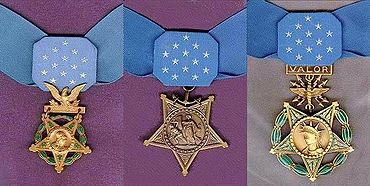
 (Denotes
last located as living: 25 Sep 2010)
(Denotes
last located as living: 25 Sep 2010)




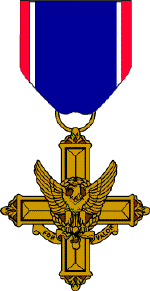 Army
Army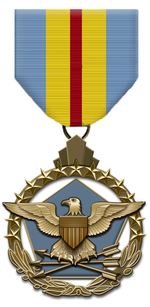
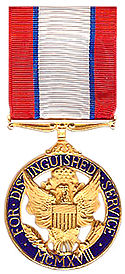
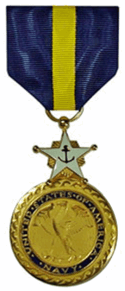
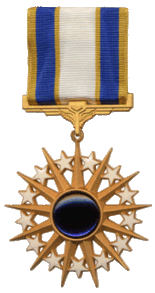
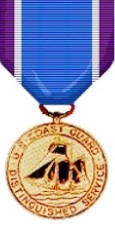
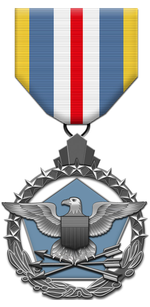
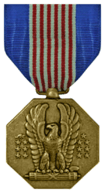
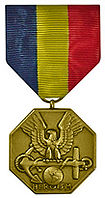
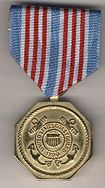
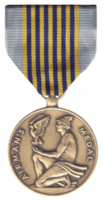
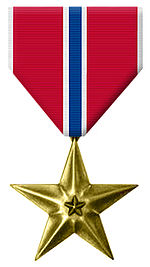
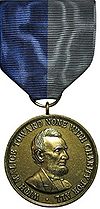 Army
& Navy Civil War Campaign Medals
Army
& Navy Civil War Campaign Medals
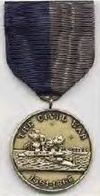
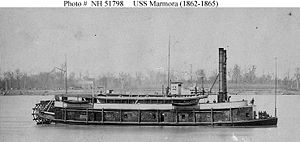 Embarking
from the Marmora with a 12-pound howitzer mounted on a field carriage,
Franks landed with the gun and crew in the midst of heated battle
and, bravely standing by his gun despite enemy rifle fire which
cut the gun carriage and rammer contributed to the turning back
of the enemy during the fierce engagement.
Embarking
from the Marmora with a 12-pound howitzer mounted on a field carriage,
Franks landed with the gun and crew in the midst of heated battle
and, bravely standing by his gun despite enemy rifle fire which
cut the gun carriage and rammer contributed to the turning back
of the enemy during the fierce engagement.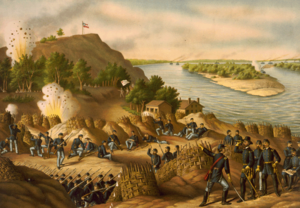
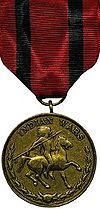
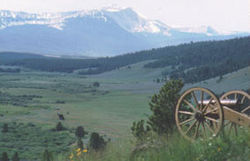

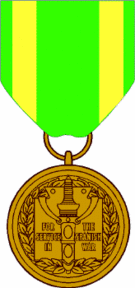
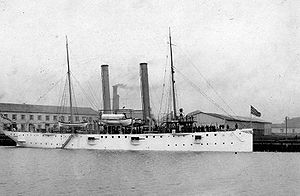
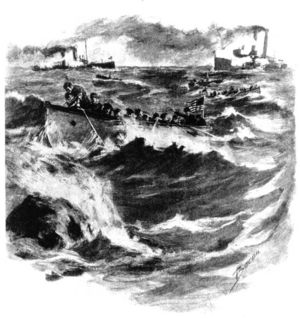
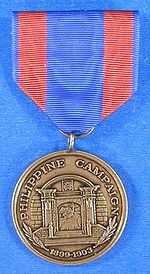 Navy version
Navy version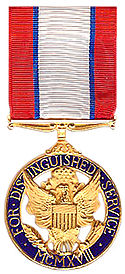
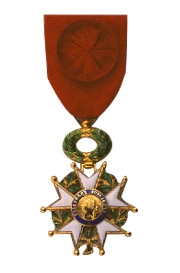
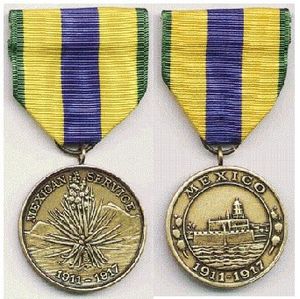 Army
(left) & Navy (right)
Army
(left) & Navy (right) 

